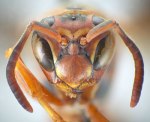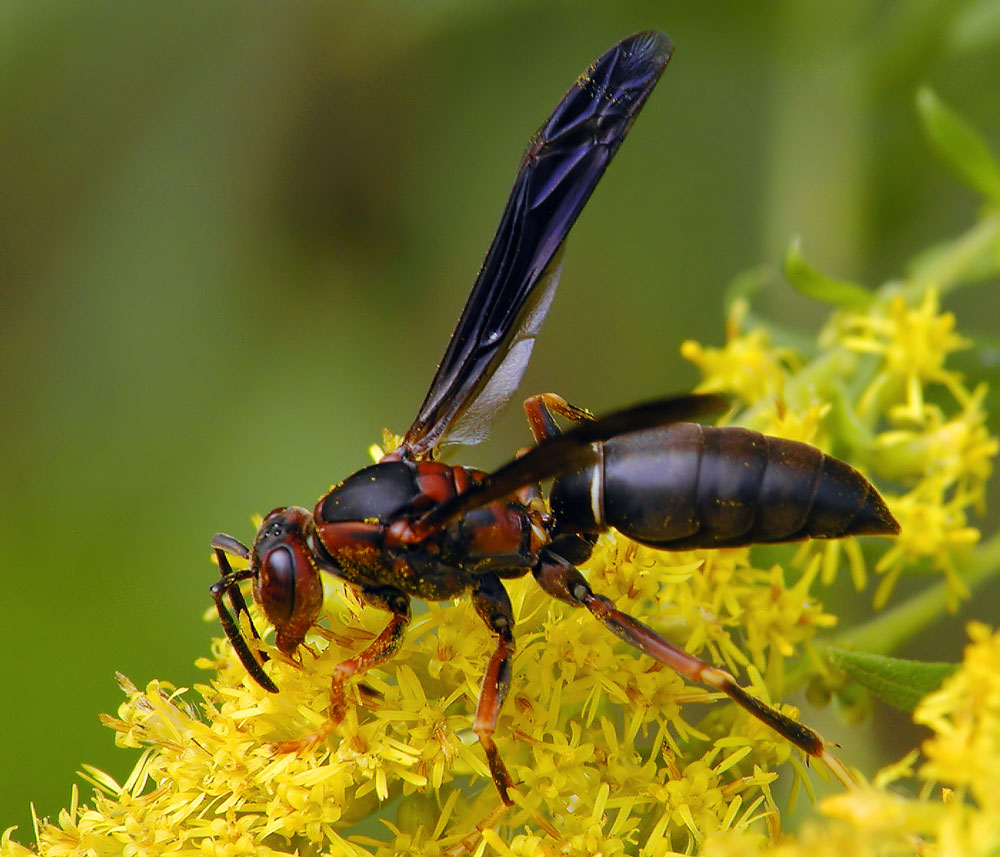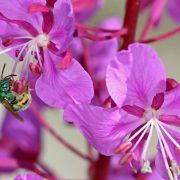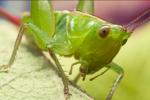By Matthias Buck, Royal Alberta Museum, Edmonton
——————————————
For many of us who are working as taxonomists, describing new species has become somewhat of a routine. Sometimes it can even become a burdensome chore: I am thinking about those of us who work on hyperdiverse groups of insects in the tropics where almost every species is undescribed (case in point: one of my former lab mates recently described 170 new species of a single genus of Diptera in one paper!). However, the feeling is very different when new species unexpectedly show up in iconic groups that were thought to be well-known. Suddenly, common and familiar creatures turn into an exciting new research frontier, providing a fresh rush of adrenaline!

Mug shot of a female of Polistes hirsuticornis Buck. The hairs on the basal articles of the flagellum are longer than in related species (Photo credit D.K.B. Cheung & M. Buck).
This is what happened a few years ago when I started working on the vespids of the northeast. The family Vespidae (which includes mason wasps, paper wasps, yellowjackets and hornets) is most diverse in warmer parts of the World, as is the majority of stinging wasps. Doing a review of the northeastern Nearctic fauna therefore didn’t seem to be a very promising project for taxonomic novelty. Especially considering that the fauna of the eastern half of the continent is significantly less diverse and far better known than that of the west.
To my utmost surprise the study (published 2008 in the Canadian Journal of Arthropod Identification) not only turned up four new species of mason wasps but also two new paper wasps (Polistes). As you know, paper wasps are some of the most iconic species in the world of wasps, almost as much as their odious relatives, the yellowjackets. Further to that, they have received great attention as model organisms for the study of social behaviour and its evolution in insects. Finding not only one, but two new species in a group like this was beyond what I expected in my wildest dreams.
So how did it come to pass? As a novice to paper wasps I expected that reviewing the taxonomy of such a high-profile group would be like a walk in the park. Weren’t there scores of scientists before me who seemingly had no difficulties in identifying these sizeable and handsome insects for their behavioral studies, filling up cabinets of specimens in collections across the continent? Or so I thought! After months of fruitless staring through the microscope my nonchalant attitude gradually turned into frustration. One of the species, the common and widespread Northern Paper Wasp (Polistes fuscatus), was so variable that it blended virtually into almost every other species in the same subgenus. Previously published keys gave me a pretty clear sense of what typical specimens of each species look like, but where were the objective criteria that would allow me to identify the numerous intermediate forms? Truly, I found myself in a taxonomic quagmire!

Aedeagus (penis) of Polistes parametricus Buck. The size, shape and position of teeth is diagnostic with regard to P. fuscatus and P. metricus, with which this species was previously confused (Photo credit D.K.B. Cheung & M. Buck).
Grasping for straws I turned to three taxonomic methods that had not been applied to Polistes before: DNA barcoding, detailed study of male genitalic features and morphometric analysis. During the previous months, I had rounded up a number of puzzling specimens which represented the spearhead of my taxonomic headaches, and submitted them for sequencing. The results came back like a thunderclap, turning my anguish into cautious excitement: the DNA barcodes of these troublemakerswere clearly different from any of the described species. With renewed energy I launched into a detailed morphological study which led to the discovery of several new diagnostic characters, confirming the distinctness of these wasps beyond a doubt. A lot of hard work had finally paid off, and I was looking at the first newly discovered species of paper wasps in eastern North America since 1836 when Amédée Louis Michel Lepeletier de Saint-Fargeau described Polistes rubiginosus!

Female of Polistes parametricus Buck nectaring on goldenrod in West Virginia (Photo credit: Donna Race).
Since molecular methods, and in particular DNA barcoding, have received a lot of attention in recent years, it seems opportune to share some of my experiences working on Polistes. Unlike a few other taxa (such as spider wasps, Pompilidae), vespids sequence nicely and easily from pinned specimens, which makes them an ideal group for this kind of study. I found the sequence data extremely helpful but they certainly did not provide the cure of all taxonomic confusion. Barcoding uncovered an unexpected genetic diversity below the species level, which proved to be hard to interpret in the absence of other data. In Polistes there is no hint of a “barcoding gap”, which postulates that genetic distances between individuals of the same species are (nearly) always greater than those between conspecific individuals. In fact, some of the species were genetically so similar that they differed by a mere 2 base pairs (out of 658). Nonetheless, the combination of molecular data with fine-scale morphology resulted in a quantum leap forward for Polistes taxonomy. Just days ago, I found out that a group of researchers in Germany and Switzerland are making similar progress on European paper wasps using a nearly identical approach.
My research paper on eastern Nearctic Polistes, including formal descriptions of Polistes hirsuticornis Buck and P. parametricus Buck, was published in the journal Zootaxa on October 1st.
Matthias Buck, Tyler P. Cobb, Julie K. Stahlhut, & Robert H. Hanner (2012). Unravelling cryptic species diversity in eastern Nearctic paper wasps, Polistes (Fuscopolistes), using male genitalia, morphometrics and DNA barcoding, with descriptions of two new species (Hymenoptera: Vespidae) Zootaxa, 3502, 1-48 Other: urn:lsid:zoobank.org:pub:6126D769-A131-49DD-B07F-0386E62FF5B9

























